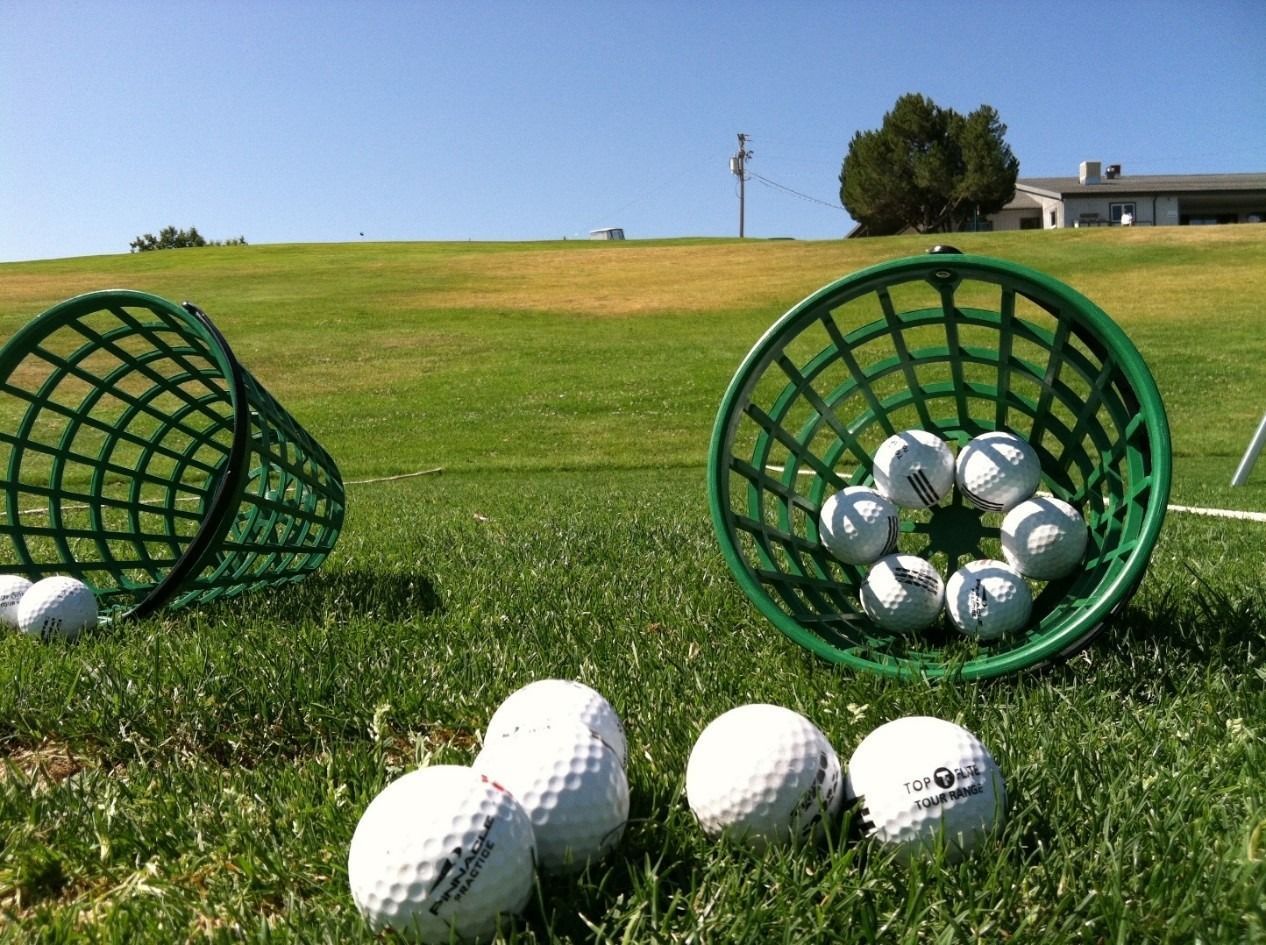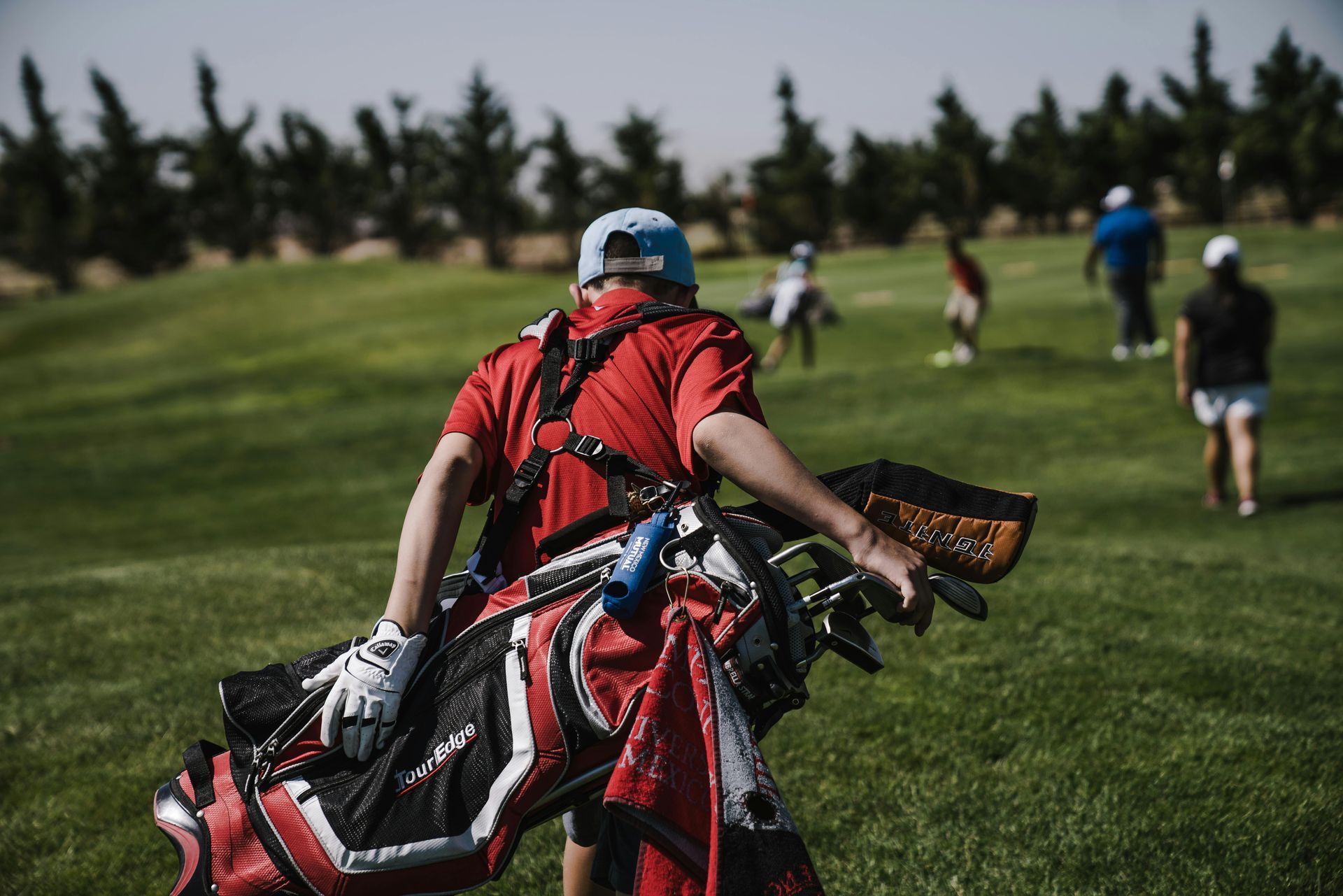How to Break 90

In this article, I’m going to provide you with the definitive, fool-proof guide on How to Break 90. Why? Because I know that it’s one goal that a huge majority of avid golfers share. “I want to break 90” is the second most common goal that my students have, behind only, “be more consistent.”
I will warn you that this plan is unorthodox. Then again, if doing things the “normal” way worked, you wouldn’t be reading this, would you? Follow this plan and I give you a 100% GUARANTEE that you will have an 89 (or better) in the books in no time.
Get Your Mind Right
A huge part of breaking through any scoring barrier is creating the proper mindset. To break 90, you need to do two things:
- Realize that 89 is 17 bogeys and 1 par (on a par 72 course). That’s it. I know that every golfer who wants to break 90 has made lots of pars and bogeys before, so there’s nothing involved in breaking 90 that you can’t do already.
- Pick the right tee box. I’ll deal with the specifics of this shortly, but you cannot go into this with the idea that you have to break 90 from the tips. Breaking 90 is breaking 90, period. If you have to go all the way to the forward tees to break 90, do it. Scoring barriers are mental more than anything else, and once they’ve fallen, they’re down for good. You should want to break them as soon as possible, regardless of the yardage of the course.
Two Commandments
There are two commandments to Breaking 90. You must abide by these commandments, lest you be doomed to shooting 91 for the rest of your days.
- Thou shalt not three putt.
- Thou shalt not take penalty strokes.
Please note that the second one doesn’t mean “don’t count your penalty strokes,” it means “don’t hit it OB, into the water, etc.”
The Shots You Need
To shoot under 90, you don’t need to be Ben Hogan, you only need 3 shots.
- An iron that you can hit 150 yards or more without ever getting in trouble
- A reliable pitch shot
- A good putting stroke
You will notice that the driver is not on this list. You do not need it to break 90. In fact, don’t even bring it with you to the course.
The “Breaking 90” Practice Plan
This practice plan is built entirely around learning, refining, and testing the three shots that you need to break 90. When you can complete each Test, you’re ready to take your game to the course to bag that 89.
Phase 1: The Iron Shot
The first thing you need to do is find out exactly how far you hit your chosen iron (let’s call it a 7I), and each club below it (8I, 9I…). This will be essential for course management.
Next, you need to work on your accuracy and consistency. For accuracy, make sure you’re hitting shots to a target and keeping track of where your misses go. For consistency, the goal is to hit every shot the full distance, whether that’s 150, 155, or 160 yards. Plus or minus a few yards is fine, but you can’t break 90 if you’re laying the sod over the ball.
Finally, spend some of your practice time on your shorter irons. These may come into play as well, depending on the course.
- Test: Hit 9/10 iron shots into a 60 foot (left to right) window at least 150 yards away.
Phase 2: The Pitch
This is probably the most difficult part of this plan for most golfers. You will need to develop a reliable pitch shot that will allow you to hit a green from 20 to 100 yards away. The method you use does not matter: you can use Dave Pelz’s “Clock” method, a Stan Utley pitch, or whatever homebrewed method you concoct. The key is reliability.
You do NOT need to go flag hunting. This plan is based on hitting the green, not knocking down pins. Practice hitting shots to the biggest, safest part of the green, just like you will on the course.
Part of why this is so difficult is that good short game practice facilities are hard to come by. If you don’t have one, improvise. Take some buckets or towels and place them on the range at varying distances. Just be sure to clean up after yourself.
When you practice, don’t hit the same length shot over and over; this is not how you will play on the course. Hit a 50 yarder, then a 20 yarder, than a 90 yarder. Keep track of the distances that are best and worst for you. This will be important for your course management.
- Test: Hit the green 10/10 times from varying distances. Don’t hit the same length shot twice in a row or more than twice overall.
Phase 3: The Putt
The primary thing that you need to do is lag putt well and clean up your short putts, so build your practice around that. Here are some sample drills:
Set up 4 balls around the hole at roughly 3 feet and make all of them. Repeat until you’ve made 20 in a row.
Put 3 balls at 3’, 5’, and 7’, all on the same line, for a total of 9 balls. Make all the 3’ putts in a row, then move back to the 5’ putts then the 7’ putts. The goal is to make 9 in a row. If you miss, start over.
Drop 3 balls at 30’ (or 40’, 50’, etc). Putt each of them towards a cup or a tee. If the balls end up within 3’, you win. See how many wins you can get in a row.
- Test: Take one ball and drop it anywhere from 10 to 60 feet from the cup. Putt it until you hole it out. Do this 21 times, from 21 different spots. If you can complete this in 36 or fewer strokes, you pass.
The Game Plan
Par 3’s
These holes will provide your best opportunity to make the one par that you need, but they can also be the holes that derail your round. Let’s discuss some specifics:
150 yards or less: These are your best opportunities to make your par. Choose the appropriate club, aim for the center of the green, and make your best swing. With a little luck, you might even make a birdie and give yourself the chance to shoot 88 or better!
150-200 yards: These are the most dangerous holes because of the temptation to go for it. Put your long irons away, and find a nice safe landing area short of the green. These holes, if well managed, are still great par opportunities because your pitch shots should be very short.
200 yards or more: Strangely, I like these holes better for our plan because there is less temptation to go for it. Find a safe landing area that will give you a nice angle into the green. There’s no requirement that you hit your 7I from the tee: if the best landing area is 140 yards away, hit your 8I followed by a 60 yard pitch. Remember that the angle of your approach can be every bit as important as the distance.
Par 4’s
These are your bread and butter holes for this strategy: two 7 irons, a pitch, and two putts.
300-330 yards: These holes will provide excellent opportunities to make a par, but you will need to focus on good decision making and course management. After a good tee shot, you will have 150-180 yards left. On the short end, you may consider hitting another 7I straight into the green. If there’s not too much trouble by the green, or if you’re hitting the ball very well, this can be a great choice. If you’re too far out or don’t have the confidence, consider your best wedge distance, the safest landing area, and the best angle into the green when planning your second shot.
3330-370 yards: Most of your par 4’s will probably be in this range. After a good tee shot, you will want to consider what the best second shot club will be. As with the short par 4’s, consider not only your best wedge distance, but also the best angle and safest landing zone.
370-400 yards: These holes will require two strong 7I shots to get you within wedge range. Resist the urge to try to hit your 7I 170 yards off the tee, you don’t need it! Stick to the plan!
If you have par 4’s that are longer than 400 yards, you’re probably playing from the wrong tees.
Par 5’s
Unquestionably, the Par 5’s are the holes that will most test your commitment to the plan. Your driver will beg to come out (this is why you should leave it at home!). Remain committed to the plan and you will be rewarded.
Even when you hit “only” a 7I off the tee, the Par 5’s can be a great scoring opportunity. If the hole is playing 450 yards or less, you can hit your GIR with three good 7 irons. From 450-500 yards, you will have great opportunities to set up your favorite wedge distance and an optimal angle into the pin. When the holes stretch out to 500-550 yards, you will be tested: you will need four quality shots to hit the green.
Remember: Keep the ball in play and aim for the center of the green.
In Case of Emergency, Read This
As the old boxing cliché goes, “Everyone has a plan until they get hit in the nose.” It’s easy to sit here and think about hitting every fairway and green, but what about when things go wrong? Here’s what to do and what to avoid.
If you miss a fairway
Don’t panic. Play a safe shot that will get the ball back in play. Advance the ball towards the hole if possible, but this is secondary to getting the ball safely back into play. If you can advance the ball to within 150 yards, play your next shot into the green. If not, lay up to your best yardage and try to make a putt.
If you miss a green
Don’t panic. Don’t attempt a Mickelsonian all-or-nothing shot to try to “get one back.” Play a safe shot that will get the ball onto the green and try to make a putt.
If you make a double bogey
Don’t panic. Stick to the plan. The only thing that has changed is that you have to make one more putt. That’s it. The course will give you plenty of opportunities for that.
Bottom Line
Don’t panic. Don’t deviate from the plan. If something goes wrong, get the ball back on course and try to make a putt.
Conclusion
I hope you’ve found this plan helpful, and I hope that some of you give it a try. It’s definitely unorthodox, but I think you will find that it is also quite effective.

Hey everyone, Daniel Guest here—Top 100 Coach, #1 Instructor in PA, and founder of Imagen Golf. I've given over 39,000 lessons, and if there's one thing I know, it's that the game is always evolving. We're not just practicing anymore; we're training smarter than ever. The days of just grinding on the range are over. The future of golf instruction is personalized, tech-driven, and focused on your unique blueprint. Let's dive into the three biggest game-changers you need to leverage right now to Unleash the Golfer Within!

NEWTOWN, Pa. - Oct. 12, 2025 -- Newtown and surrounding communities are about to experience golf like never before. The Golf Place, a state-of-the-art indoor golf facility designed for enthusiasts of all skill levels, from those honing their game to those simply seeking a fun, engaging golf experience, today announced its grand opening for Tuesday, October 25, 2025. The Golf Place is poised to become the region's premiere destination for indoor golf instruction, practice, and play. The facility will feature eight cutting-edge Trackman golf simulators, offering hyper-realistic gameplay, detailed swing analysis, and access to the world's most famous courses.

Moving decisively away from subjective "feel-based" advice to a scientific, data-driven approach.Fueled by advancements in technology, the latest trends are democratizing the precise analysis once reserved only for tour professionals, making personalized, high-level coaching accessible to every golfer. Here's a look at the key trends shaping modern golf instruction and practice in 2025:

For years, you've been told to do a bunch of confusing things—like opening the clubface wide open and swiping across the ball—that just don’t work for the average golfer. It’s an old-school approach designed for old-school wedges. But at Imagen Golf, we don’t teach that. We teach the new-school bunker technique that the best players in the world are using every week to make bunker shots look easy. Players like Scottie Scheffler, Jon Rahm, and Collin Morikawa have all ditched the old rules for a simpler, more powerful way to get the ball up and down.

When we hear the word stinger in golf, the first thought that often comes to mind is Tiger Woods and his famous 2 iron stinger he rips down the fairway.This golf shot is super important to have in your skill arsenal. If you don’t carry a 2- or 3-iron, a fairway wood will achieve similar results. The concept behind the shot can also be used for punch approach shots to receptive greens, using any club down to a pitching wedge.On windy days, you can use it to maximize distance by hitting that low flying drive that stays low and runs like crazy upon landing. Meanwhile, your playing partners are watching their drives get hung up in the wind, losing 50 yards off their normal distances. So what's the secret? How do we perfect the stinger like Tiger? To hit the “stinger” you want to produce a low dynamic loft when you strike the golf ball in order to create a low launch and low spin. By default, you're used to hitting with high dynamic loft so it can make the transition a challenge at first but once you master it, you can hit this golf shot on command any time you need. How to Hit with Low Dynamic Loft To produce low dynamic loft, we want to create forward shaft lean at impact which basically means the grip of your club is ahead of the clubface when striking the golf ball. This delofts the face which helps lower the launch angle and back spin rate. In order to create a forward shaft lean at impact you'll need to change a few things during set up. 1. Start by moving the golf ball a little further back in your stance and place a little more weight on your lead side (left side for right handers). This simple adjustment in set up will set your hands forward at address and will help you produce a slight downward hit on the ball. 2. Choke down about an inch on the grip for added control. These adjustments should cause your arms and the shaft to form a “y”. Make a smooth, full backswing, and try to retain this “y” as much as possible throughout the swing. 3. Now the key to creating a low loft and square face at impact is in the lead wrist. The stinger’s low trajectory and extra roll result from the bowed wrist position at impact. To practice getting the bowed wrist feeling, simply make a swing with your lead arm, without a club. Return the hand to impact with your lead wrist “bowed” so that the logo on the glove points to the ground directly in front of the ball. This is a great “feeling” in the golf swing to help lean the shaft forward and square the face up when striking the golf ball 4. Lastly, make sure you maintain this low loft through impact and during the follow through. The mental swing thought is to hit the ball and stop. This prevents the wrists from flipping over or “releasing” after impact. Once you achieve the bowed impact, the finish flows naturally, as the trunk and arms rotate the club around to the left. Instead of causing a slice, this allows for a low, running draw. The faster the body unwinds, the farther you can hit the ball. The finish should feel very different from a normal swing where the hands turn over. To “sting” it, the wrists stay firm, and the left elbow folds down toward the ground.

#1: Choke Down the Club The first step to getting back in control when you feel like you're losing your swing mid-round is to choke down on your clubs more than normal. Shortening the stick will help you control the face more, similar to how you can hit your wedges straighter than the driver because they're a shorter club length. #2: Swing at 60% Normal Power During our golf rounds, we often start changing our tempo and speeding up our swing without realizing it. This mental tip will help you slow down a little bit by getting you to feel like you're swinging 60% of normal, but in reality, you're probably swinging 80-90% still. As we slow down our tempo and get back to a more natural rhythm, you'll see control come back into your golf swing. A good way to do this, it to take 3 swings. The first one swing as hard as you can. The second, swing very soft. Then on your third, try to swing in the middle of the previous two swing speeds.Subscribe #3: Hold the follow-through finish until you see the ball land. In basketball and in golf, the follow-through is important to keeping the shot on line. Try making your swing thought about holding the follow-through prior to swinging and it will take your mind off of what all could go wrong during the swing. It also will tell your subconscious mind to recall what the follow-through feels like. It's often the backswing or the downswing we are focused on feeling in our pre-shot routine and during our golf swing, but let's put our mind onto the follow through and focus on holding it like a statue upon finishing. Learn more about our advanced golf training to speed up your improvement!

Proper footwork, weight distribution, and weight movement are fundamentals that many players can improve if they understand and practice properly while working on their golf game indoors. Good footwork puts you in the best position to deliver the club consistently. That’s where a good friend of mine and Golf Digest Top 50 Instructor Todd Sones is teaching these days: indoors. In the winter months, Todd works out of the Buffalo Grove Dome located 45 minutes northwest of Chicago. Todd is on the Golf Academy of America’s National Advisory Board and says when you’re practicing inside, you should always wear your golf spikes. So often, Todd sees people come in to practice off the mats wearing their tennis shoes. While it’s convenient, the problem is that your tennis shoes are designed for heel-toe motion, a linear motion. Golf is a rotational motion. It’s important that you’re on your feet properly. The best players move in a circular motion. Their weight is more toward the balls of their feet at address, their knees are slightly flexed, and their lower body is engaged. As the body rotates, a good player loads the heel of the trail leg and then on the transition to the downswing, drives into the instep of the lead leg before rotating back into the heel of the lead leg. Although you start on the balls of your feet in the set-up position, you really swing from the heels throughout the backswing and the downswing into impact. When you’re wearing tennis shoes that push your weight more toward your toes, you can’t swing the club nearly as forcefully as you can if you’re swinging with proper weight distribution. When someone wears their tennis shoes, you’ll see their head move forward into their toes, and then they back up away from the golf ball during the swing.

The hard truth is that the average golfer plays for years and never improves. But why? With input from many of my instructor friends, we’ve drawn up a list of the 12 reasons why you may not be getting better. 1. You never practice You know that whole 10 thousand hours thing? How it takes at least that long to master a skill? Do the math. Ten minutes once a month isn’t going to get you there. 2. You practice unproductively Smacking drivers on the range until you’re blue in the face might give you a backache. But it’s not going to get you where you want to go. What you need to do is practice with a purpose. Go to the range to get better at one thing, posture for example. Once you’ve spent 30 minutes working on that and incorporating into your swing, leave the range. 3. Your equipment isn’t optimized That includes your golf ball, we recommends getting your entire arsenal checked at least once a year. 4. You’ve got the wrong mix of clubs News flash. You’ve got no business carrying a two-iron. You’re also probably not good enough to have more wedges than hybrids in your bag. So don’t. 5. You don’t track your stats You think you’re a great putter, and a middling driver. But are you really? Without knowing for sure, you can’t maximize your practice time, much less devise an optimal on-course strategy. 6. You’re not as good as you think you are Two-twenty over water is not in your wheelhouse, but you always try it, because, well, your weakness is your fondness for the hero shot. 7. You’re too hard on yourself On approach shots from 150 yards, the average Tour pro leave is 23 feet from the pin. But you somehow believe you should be knocking down the flagstick, so you berate yourself every time you don’t. 8. You ride a cart You think you’re saving energy. What you’re really doing is losing touch with the natural rhythms of the game. Walk when you can. 9. You think there’s a quick-fix In a world filled with swing tips, you believe there’s a magic one that will solve all your problems. So you search, and search. You might as well be trying to track down Sasquatch. The tough news is it comes down to working on good principles long enough for them to become habits. 10. You’re don’t hit it far enough Sorry, but size matters. A good way to get better is to swing the club the faster to hit the ball longer. Any good coach can correct crooked, but getting the ball to go farther is a tougher task. 11. You focus more on words than feel You’ve gotten a lot of verbal instruction. But, words don’t translate as well to performance. Pay more attention to images and feels. It will free up your mind. And your swing. 12. Play the appropriate tee box I know, all your buddies play from the blues, but you’re a 20+ handicap. Not only do you have NO business playing from the far tee boxes but it hurts your game as the course sets up completely different for you now. Put your ego aside and have fun!


